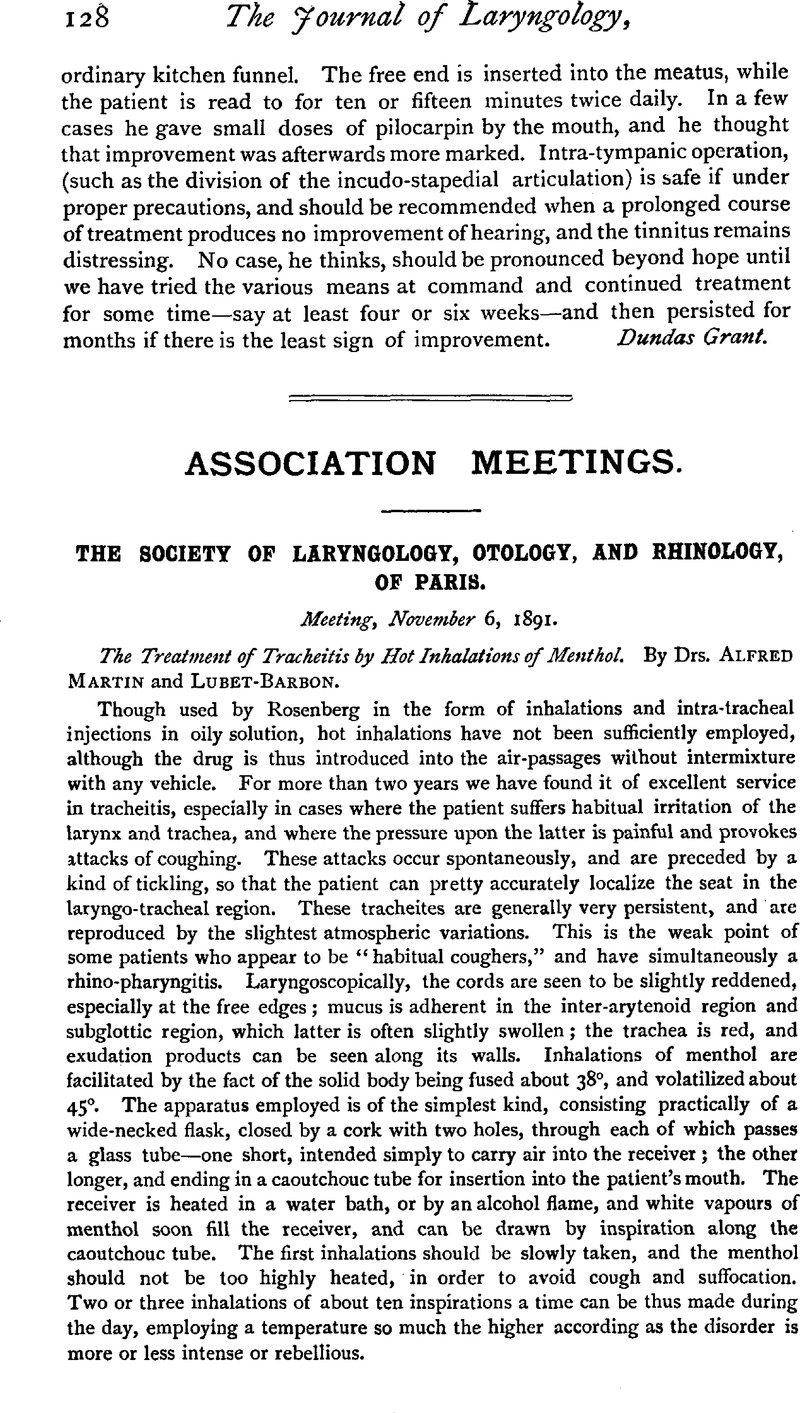No CrossRef data available.

1 “Thesaurus anatomicus,’ Tome III., 1703.
2 “Abbildungen d. Mensch. Organe des Geruches,’ 1809.
3 “Annales du Museum d'Histoire naturelle,’ Tome XVIII., Rapport de Cuvier.
4 “Handbuch der Mensch. Anatomie,’ Tome IV.,1820, Cité par A. Koelliker.
5 “Zur entwickelungsgeschichte des Kopfes des Menschen, etc.,’ 1869.
6 “Ueber die Jacobodschen Organe des Menschen, etc.,’ 1877.
7 “Ueber das os intermaxillare des Menschen,’ 1882.
8 “Lehrbuch der Anatomie der Sinnesorgane,’ 1887.
9 “Monatsschrift für Ohrenheilkunde, 1886,’ et Congrès Internat. de Berlin, 1890.
10 Quain's, “Elements of Anatomy,’ 9th edition, 1882.Google Scholar
11 “Real-Encylopædia der gesammten Heilkunde,’ 2te ed., 1888, Art. Nasenhöhle.Google Scholar
12 “Reserches sur l'organe de Jacobson,’ Thèse de Paris, 1845.Google Scholar
13 “La membrane muqueuse des fosses nasales,’ Thèse d'agrégation, 1878.Google Scholar
14 We must thank M. Poirier, “Chef du travaux Anatomiques de la Faculté,’ for assistance in these researches.
15 “Maladies des fosses nasales’ (Ouvrage traduit par nous), 1888, p. 13.
16 Figure copied from Merkel by Zuckerkandl, loc. cit.
17 In the clinic of M. Hallopeau, at the suggestion of M. Lallier.
18 Ignoring the picture, we have taken a scheme of the entire piece by the aid of a compass. The examination of the fragment preserved, in which the perforation is seen immediately subjacent to the Jacobsonian cushion occupying the base of the septum, is more demonstrative than the scheme.
19 “Virchow's Archiv,’ Tome cxx., 1890.
20 Another micro-organism, the gonococcus, is found to have a natural tendency to seek refuge in the crypts of the urethra, and to multiply there so as to lead to a series of modifications, a phlegmasic process, folliculitis. The site of this folliculitis is, according to Lefort (Thèsé de Paris, 1888–1889), the valvule of Guérin situated about one and a half centimetres from the meatus. If the pathogenesis of the perforating ulcer is what Hajek considers it to be, could not the cocci, so numerous in the nose, under certain circumstances produce a folliculitis of the canal of Jacobson, leading to necrosis of the subjacent cartilage? The analogy is striking.Google Scholar
21 1. (July 8, 1891) A copper turner, aged twenty-six, syphilitic for three years, and tuberculous, had for eight days perceived a perforation of the septum. For six months he had been in the habit of removing adherent crusts from the nasal fossæ by the finger nail–sometimes causing slight bleeding. There was a perforation of the antero-inferior portion of the cartilaginous septum of the size of a lentil, cicatrized, except in its superior portion, and having thin edges, the mucous membrane covering this having a cicatricial aspect. On the left the canal of Jacobson was about 3 mm. in depth, and situated about 4 mm. behind the posterior edge of the perforation.
22 2. First Case.–A man with tertiary syphilis; syphiloma of the upper pharynx; loss of a portion of the sphenoid; perforation of the palatine vault, etc. A small grey-white cicatrix existed in the left nasal fossæ about 4 mm. long and 2 mm. high, exactly above the cushion of Jacobson and in the spot where the canal is usually found.
Second Case.–Lupus of the nose and upper lip, extending into the vestibule of the nasal fossæ. Red, bleeding granulations in the region of the canal of Jacobson, the probe passing through the whole septum. Cauterizations with nitrate of silver. In June the granulations disappeared, and the perforation presented cicatrized edges, being situated above the cushion of Jacobson, 4 or 5 mm. long, and 2 mm. high, and occupying exactly the site of the canal of Jacobson.